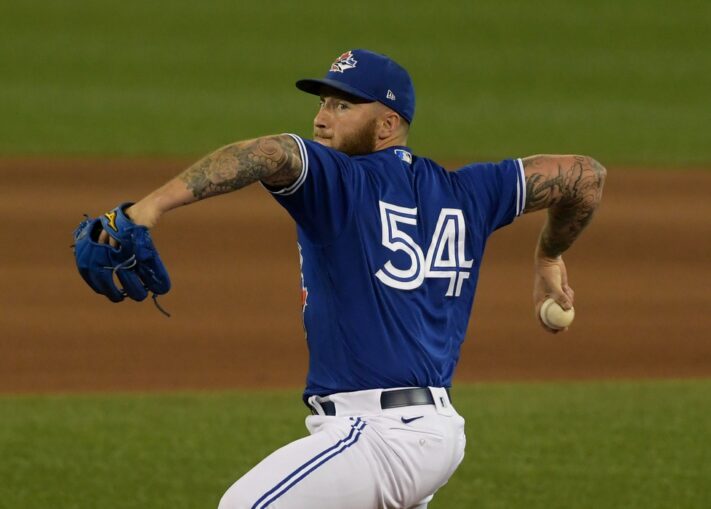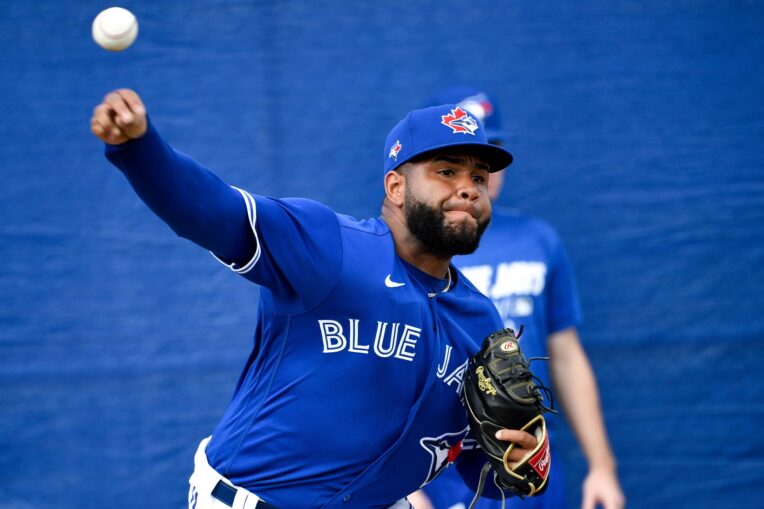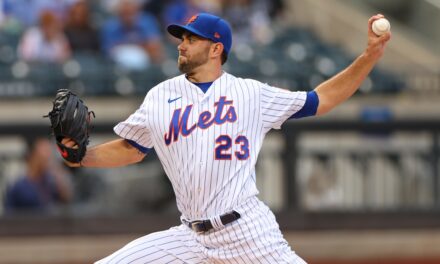
Sean Reid-Foley, Credit: Dan Hamilton-USA TODAY Sports
The Mets were able to inject some life into their minor league pitching depth late Wednesday night by acquiring a trio of arms from the Toronto Blue Jays in exchange for Steven Matz.
Matz was no guarantee to be a member of the opening day rotation in 2021 but also could not be optioned to the minor leagues since he has more than five years of service time.
With the bullpen virtually set following the signing of Aaron Loup, the scenarios in which Matz remained with the team through spring training were dwindling by the day.
In Sean Reid-Foley and Yennsy Diaz, the Mets picked up two depth righties that join the 40-man roster with usable minor league options in 2021. They also acquired Josh Winckowski, another right-hander, who should reach the upper minors this season.
Let’s look at each of the newest Mets individually.
Sean Reid-Foley
It wasn’t that long ago that Reid-Foley was one of the top 100 prospects in baseball, peaking at no. 75 on Baseball America’s list prior to the 2017 season.
Born in Guam while his father served in the Coast Guard, Reid-Foley signed for just over $1.1 million after the Blue Jays took him in the second round of the 2014 draft.
He reached the majors as a 22-year-old in 2018 and has bounced between Toronto and Triple-A Buffalo ever since. Strictly a starter throughout his time in the minors, Reid-Foley has come out of the bullpen in eight of his 21 big league appearances.
As he made the ascent through the minor leagues, Reid-Foley was scouted as a guy who could potentially hit 96-97 mph with some consistency. That hasn’t necessarily held up even as he works out of the bullpen, with his fastball just averaging 94 mph in relief. With an average movement profile as well, you’re just not looking at a plus fastball here
For a pitcher that sits in the low-90s, Reid-Foley has been incredibly wild in the major leagues, posting a walk rate of 23 percent in 71.2 innings. His most-recent extended run came in Buffalo in 2019. In 89 innings there, he walked 6.6 batters per nine.
Reid-Foley’s primary offspeed pitch is a slider that he’s used a third of the time since 2019. He also threw it harder in 2020, averaging 85.9 mph after sitting at 83.7 over his first two major league seasons.
In a limited sample, Reid-Foley’s slider has been very effective, posting run values of -4.7 in 2018 and -4.2 in 2020 (on a per 100 pitch rate). Simply put, when batters see a slider at the end of their plate appearances, they’re seeing extremely poor results.
Reid-Foley doesn’t have a crystal-clear role going forward. The Mets aren’t shaping up to have an interchangeable bullpen and at the moment it would appear that Joey Lucchesi has the edge on the fifth starter job. Any additional pitching depth on the 40-man roster would only bury Reid-Foley.
Heading into his final option year in 2021, he will have to take advantage of whatever opportunities he does receive to prove himself worthy of a roster spot in the future.
Josh Winckowski
None of these three pitchers distinguish themselves from the others, but Winckowski is in a bit of a different class given that he is not on the 40-man roster and has only reached the High-A level.
Standing at 6’4″, the 2016 draft pick works from an over-the-top release point. Primarily a fastball-slider pitcher, Fangraphs notes that he recently added a splitter to his arsenal. They also note his fastball has touched 97 mph, though that seems to be more of a bullpen read than a consistent occurrence in his starts.
Statistically, Winckowski has generated solid results as a pro but hasn’t posted the strikeout numbers that you would see from dominant pitching prospects. He hasn’t been burned by walks or home runs, though. In total, this is looking like a no. 4-5 starter profile with a multi-inning relief role not off the table.
Winckowski was not selected in the Rule 5 Draft in December, which likely means that teams were unsure of the state of his development after the lost season (he was not at the Blue Jays’ alternate training site). Though Double-A Binghamton would be the next step in his natural progression, a strong showing in spring training could see him push for a Triple-A Syracuse roster spot.
Josh Winckowski paints the corner in last night’s Lugnuts game. He went 7 innings, gave up 3 hits, 2 earned runs, 3 BBs, and had 7 Ks. He threw 90 pitches, 59 of those were strikes. pic.twitter.com/3IjIPDrP9A
— Ryan Di Francesco (@RyanDifrancesco) June 15, 2019

Credit: Douglas DeFelice-USA TODAY Sports
Yennsy Diaz
Díaz was another big amateur signing by the Blue Jays in 2014, bringing home a $1.6 million bonus. Not unlike Reid-Foley, Díaz has had little issue climbing up the minor league ladder and made his major league debut in 2019 as a 22-year-old.
Unfortunately for Díaz, that seven-batter, four-walk, two-run performance out of the bullpen has been the extent of his major league time thus far. He suffered a strained lat muscle in spring training last year and did not return to the mound until this winter in the Dominican Republic.
Yennsy Diaz bends baseballs. pic.twitter.com/Mc3FNhnKCU
— Ryan Di Francesco (@RyanDifrancesco) July 7, 2019
Though nearly all of his professional experience has come as a starter, Díaz currently projects as a low-leverage reliever. Both Fangraphs and MLB Pipeline grade his mid-90s fastball as his only plus pitch.
His offspeed command (seen above; he throws an average changeup as well) will be the difference between him being a contributor or a swift 40-man castoff (he has two options left and picked up a full year of service time while on the injured list in 2020).
The Mets made out pretty well here. Matz carried little-to-no trade value, and if he ends up providing the Blue Jays with solid value they’ll have to compete to keep his services on the open market next winter.
In exchange, New York received a trio of arms that are far from flashy but continue to deepen the organization’s pipeline.















